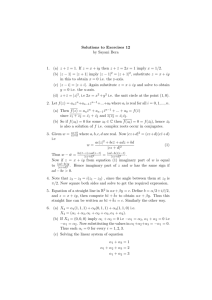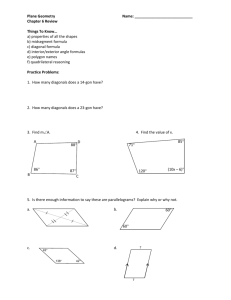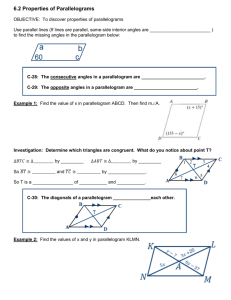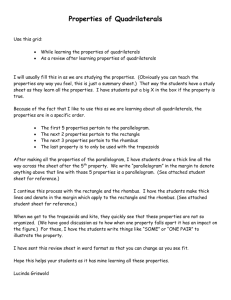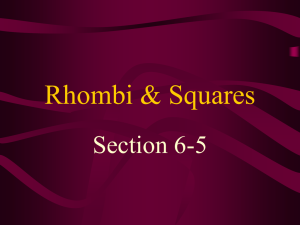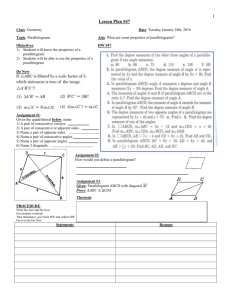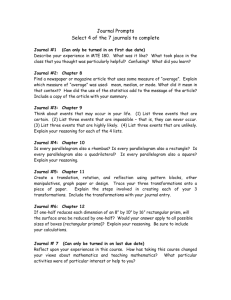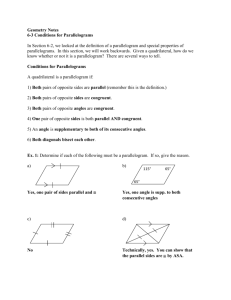Chapter 6 Quadrilaterals
advertisement
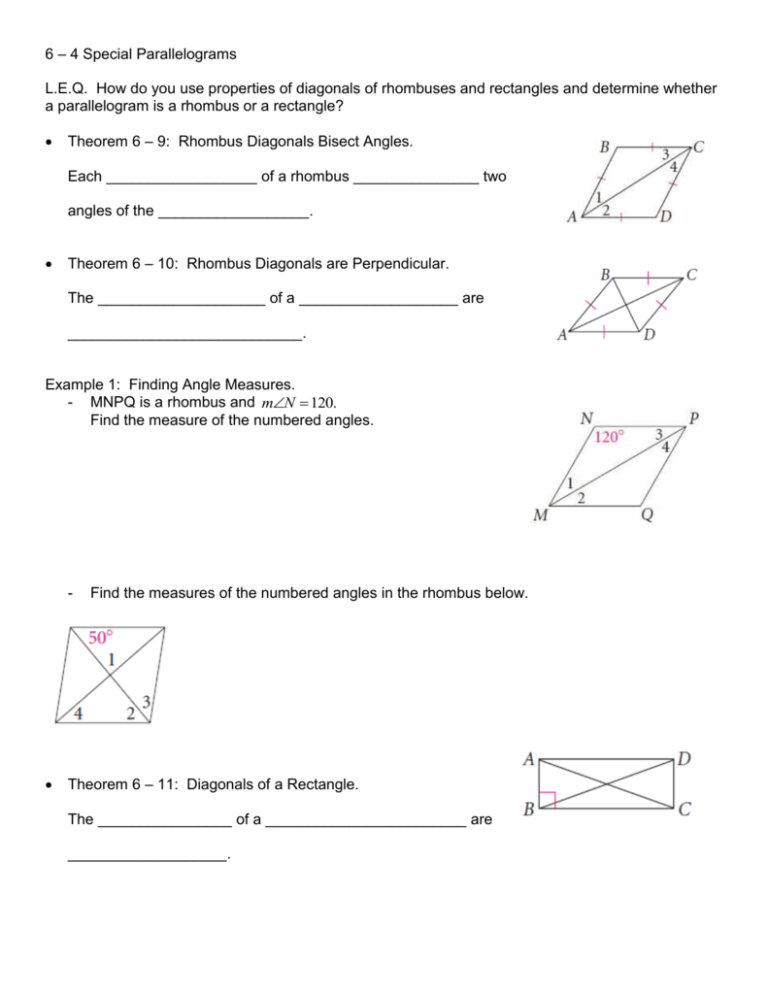
6 – 4 Special Parallelograms L.E.Q. How do you use properties of diagonals of rhombuses and rectangles and determine whether a parallelogram is a rhombus or a rectangle? Theorem 6 – 9: Rhombus Diagonals Bisect Angles. Each __________________ of a rhombus _______________ two angles of the __________________. Theorem 6 – 10: Rhombus Diagonals are Perpendicular. The ____________________ of a ___________________ are ____________________________. Example 1: Finding Angle Measures. - MNPQ is a rhombus and mN 120. Find the measure of the numbered angles. - Find the measures of the numbered angles in the rhombus below. Theorem 6 – 11: Diagonals of a Rectangle. The ________________ of a ________________________ are ___________________. Example 2: Finding Diagonal Length. - Find the length of the diagonals of rectangle GFED if FD = 2y + 4 and GE = 6y – 5. - Find the length of the diagonals of GFED if FD = 5y - 9 and GE = y + 5. Theorems Used to Prove Whether a Parallelogram is a Rhombus or a Rectangle. Theorem 6 – 12: If one __________________ of a parallelogram _________________ two _____________ of the parallelogram, then the parallelogram is a __________________. Theorem 6 – 13: If the __________________ of a parallelogram are __________________________, then the parallelogram is a ___________________. Theorem 6 – 14: If the ______________________ of a parallelogram are _____________________, then the parallelogram is a _____________________. Example 3: Recognizing Special Parallelograms. - Determine whether the quadrilateral can be a parallelogram. If not, write impossible. Explain. o The quadrilateral has congruent diagonals and one angle of 60 degrees. o The quadrilateral has perpendicular diagonals and four right angles. - A diagonal of a parallelogram bisects two angles of the parallelogram. Is it possible for the parallelogram to have sides of lengths 5, 6, 5, and 6? Explain. Example 4: Real-World Connection. - Community Service Builders use properties of diagonals to “square up” rectangular shapes like building frames and playing-field boundaries. Suppose you are on the volunteer building team at the right. You are helping to lay out a rectangular patio. Explain how to use properties of diagonals to locate the four corners. Homework: pgs. 315 – 317 #s
